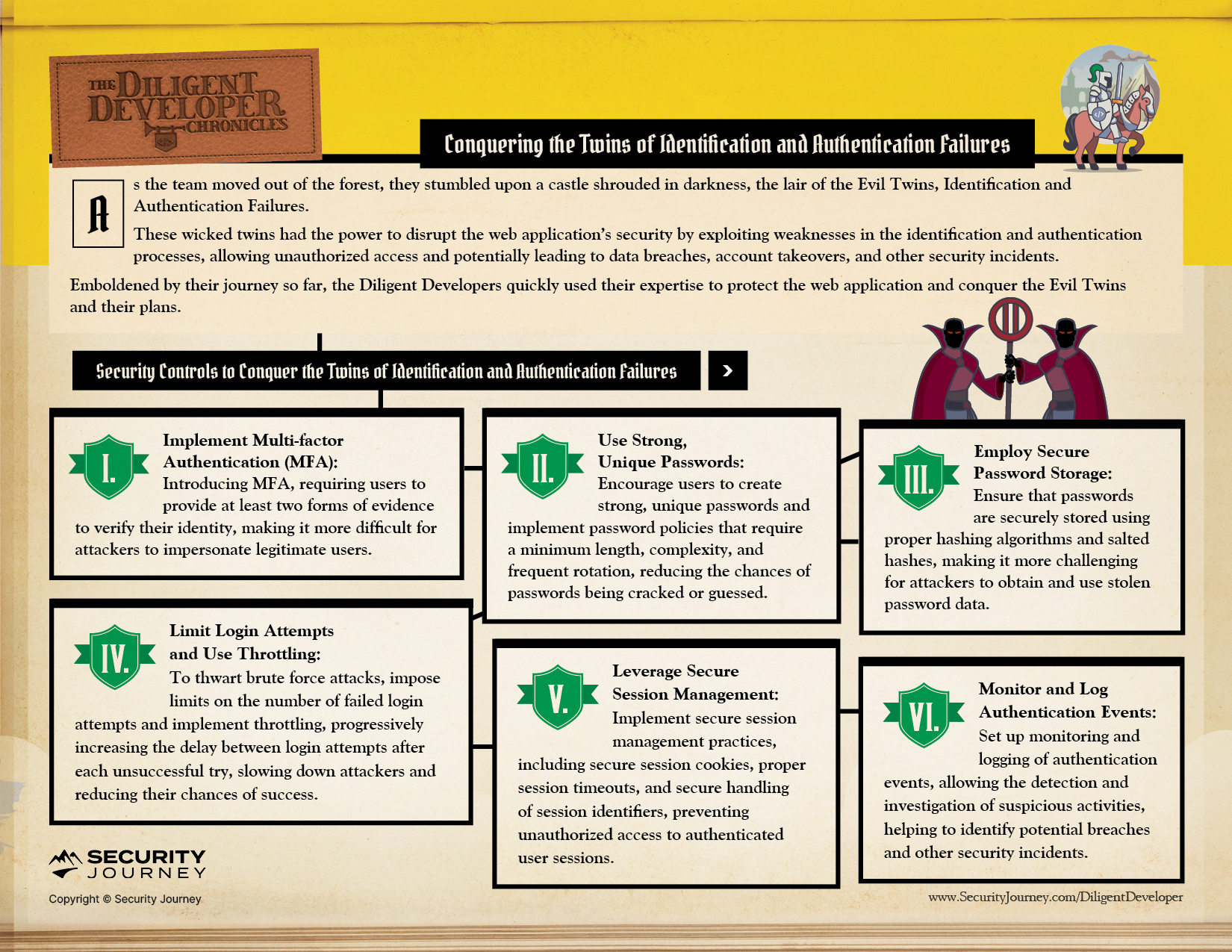Published on
The OWASP Top 10 is a go-to AppSec resource to stay aware of the latest threats in the developer community. But sometimes, your vulnerabilities don't come from the latest hacker or technology – they come from your own outdated systems.
In this article, we will concentrate on Vulnerable and Outdated Components, provide recommendations on how to prevent the exploitation of your software, and dive into how The Diligent Developer Chronicles is a great training tool for your development team.
Read More About OWASP Top 10: OWASP Top 10 Security Misconfiguration Explained
What are Vulnerable and Outdated Components?
It refers to the use of open-source or proprietary code that contains software vulnerabilities or is no longer maintained. This code can be in the form of libraries or frameworks, and for web applications, this can include Laravel (PHP), Angular (JavaScript), Django (Python), and many others.
The risk of using vulnerable and outdated components is that attackers can exploit them to gain unauthorized access to a web application or its data. This can lead to a variety of security problems, such as data breaches, financial losses, and reputational damage.
Some common issues with Vulnerable and Outdated Components include:
- Lack of Awareness - Many may not be aware of the latest security vulnerabilities or have a process to identify and mitigate risks.
- Lack of Resources - Some organizations may not have the staff or the budget to keep their components up to date, or they may not have the tools to identify and mitigate risks.
- Lack of Documentation - Some organizations may not have good documentation of their software dependencies. This can make it difficult to identify and track vulnerable and outdated components.
- Lack of Security Culture - Some organizations may not have a strong security culture. This can lead to complacency and a lack of attention to security risks.
Real-Life Example of Vulnerable and Outdated Components: Australian Census Hack
In 2019, the Australian government's census website was hacked due to a vulnerability in the PHP code used to build the website. The vulnerability was in a library called SimplePie, which was used to parse RSS and Atom feeds on the census website. The vulnerability had been known for several months before the hack, but the Australian Bureau of Statistics (ABS) had failed to patch it.
The hack was discovered on August 9, 2019, and the ABS immediately took the census website offline. The ABS later announced that no personal information had been stolen in the hack, but the incident raised concerns about the security of the Australian government's online services.
How Can You Protect Against Vulnerable and Outdated Components?
The key to protecting against vulnerable and outdated components is to be proactive and have a process to identify and mitigate risks.
This means being aware of the latest security vulnerabilities, using tools to identify vulnerable and outdated components, and patching vulnerabilities promptly. It also means having a process to manage security risks, such as a secure development lifecycle and security training for staff.
Here are some ways you can prevent Vulnerable and Outdated Components within your code:
Compiling a comprehensive inventory of all software components, including their versions and dependencies. This Software Bill of Materials (SBOM) provides a clear understanding of the application's structure and facilitates the identification of components that require updating.
Regular monitoring for updates and security patches for all components and swiftly applying these updates will minimize the potential risks associated with vulnerabilities.
Identified and replaced outdated and unsupported components no longer supported or harbored known security vulnerabilities to ensure that the application exclusively relies on secure and up-to-date components.
Employing a Software Composition Analysis (SCA) tool to automate the detection and reporting of any vulnerable components within the application, decreasing the time needed to address identified issues and mitigate potential risks.
Implement a robust and repeatable process for updating and patching components to ensure the application remains resilient and continuously aligned with the latest security standards.
Bring The Diligent Developers to Your Organization
Our AppSec experts at Security Journey recommend that developers don’t just take annual training on the most current OWASP Top 10 to be aware of prominent vulnerabilities and code risks but to have continuous training and conversations about code security in your organization.
But why not have fun in the process?
Security Journey developed The Diligent Developer Security Awareness & Education Program as a fun way to not only enhance security awareness but also to build skills across your development team to empower them to think securely. This could be added to National Cybersecurity Awareness Month initiatives for the entire development team or be used to engage/grow a security champions program -- whatever works best for your organization.
In Chapter Six, The Diligent Developers Conquer the Forest of Vulnerable and Outdated Components:

As The Diligent Developers continue their journey, stay tuned to see what OWASP Top 10 Challenge they take on next.
Visit our webpage to learn more about accessing security awareness program materials and a program guide to effectively training your organization on OWASP Top 10 vulnerabilities.


